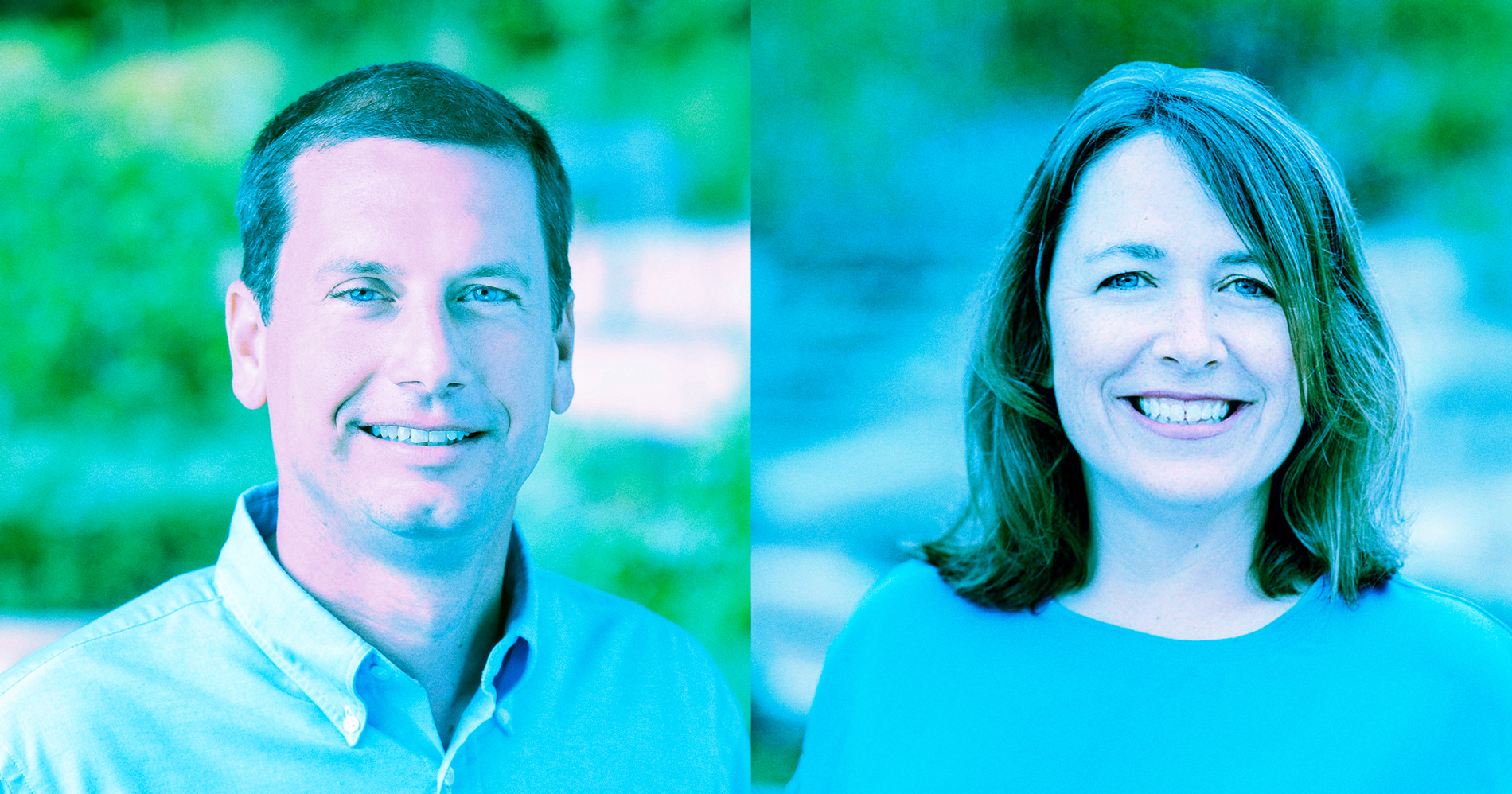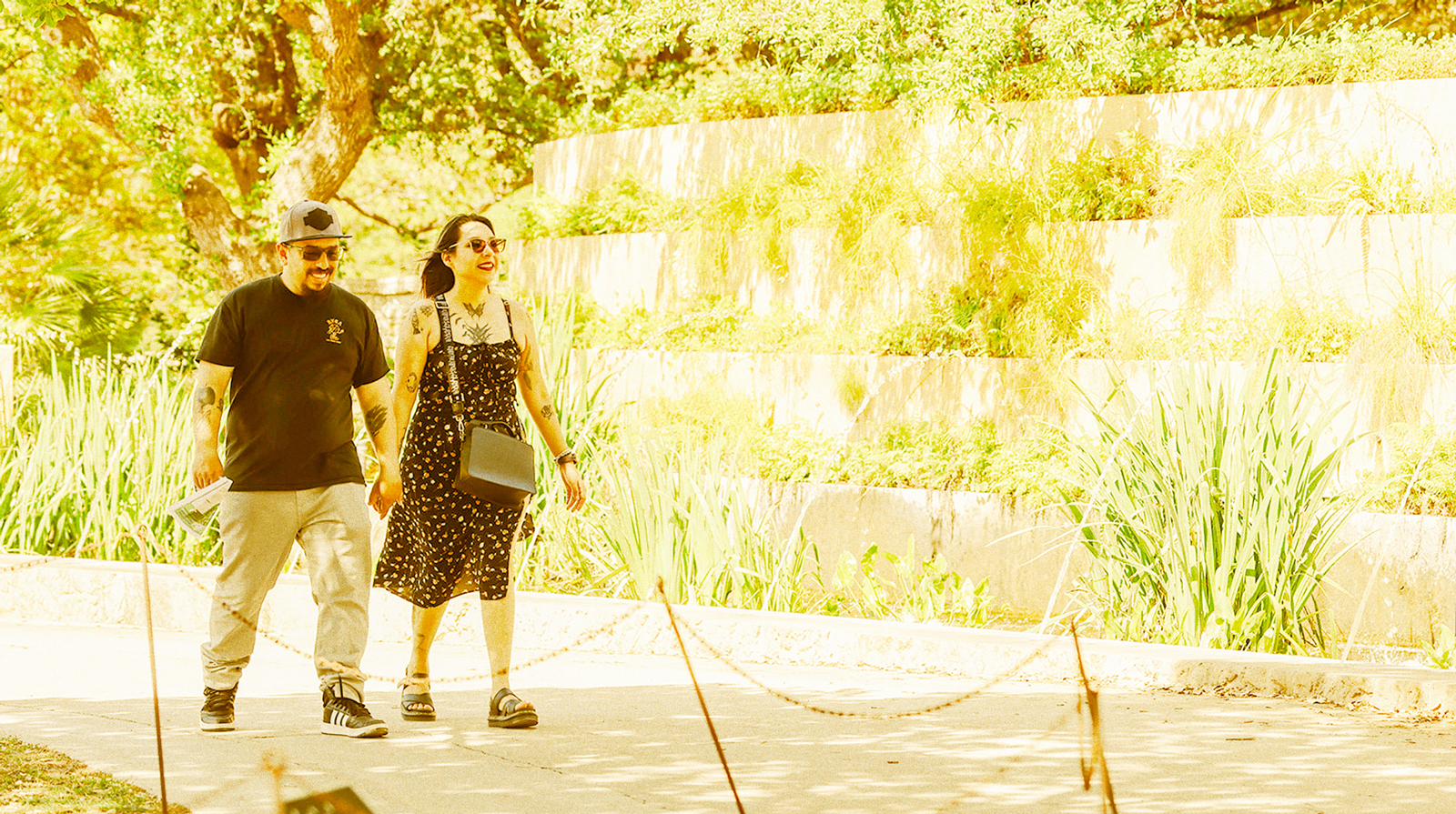
Math Ambassadors: Katie Erickson and Andrew Labay From the San Antonio Botanical Garden
Often called living museums, botanical gardens are places of wonder where nature and science intertwine. Now, as part of the Simons Foundation’s Infinite Sums initiative, six gardens across the country are celebrating an often overlooked part of that intersection: the mathematics that shapes the natural world. The Math in Bloom program creates new ways for people to experience mathematical beauty in nature.
Leading the work is the San Antonio Botanical Garden (SABG). Education and horticulture teams at each garden are designing experiences inspired by three math-themed days in 2026: Pi Day (March 14), Infinity Day (August 8) and Fibonacci Day (November 23).
For SABG Vice President of Learning and Interpretation Katie Erickson and Vice President of Gardens Andrew Labay, the goal is to create garden experiences that make mathematical beauty both visible and approachable, especially for adults who often feel disconnected from math. Through geometry-inspired landscaping, sound installations and hands-on workshops, they hope that visitors will be inspired to explore math concepts using all their senses.
We recently spoke with Erikson and Labay about leading Math in Bloom, collaborating with local mathematicians and designing new ways for people to experience the garden — and mathematics — through a different lens.
The transcript below has been edited for clarity and brevity.
Thanks for speaking with us, Katie and Andrew! Can you tell us more about what you do at the San Antonio Botanical Garden?
Katie Erickson: I’m the vice president of learning and interpretation, which means I oversee our education initiatives as well as the interpretation that happens throughout our garden spaces. I’ve been with the garden for almost eight years, and one of the most exciting parts of my role is collaborating creatively with our counterparts on the gardening team.
Andrew Labay: I’m the vice president of gardens, and I’ve also been here for about eight years. In my role, I oversee everything related to horticulture, including maintaining the landscape and plant collections throughout the garden. Like Katie, I’m a partner in leading this initiative, working closely with her team and the horticulture staff. For Math in Bloom specifically, my focus is on the landscape and the design components of the build.

I love to see the enthusiasm for collaboration between your two teams. Can you tell us more about your first impressions of approaching the garden through a math lens and what motivated SABG to take the lead in this cohort?
Katie Erickson: For our education team, we often talk about how there are thousands — really, millions — of ways to approach our collections. Keeping those experiences fresh, exciting and fun is the best way to engage people. When we’re having fun, our audiences usually are, too. So when Simons floated the idea of exploring math in the garden, it felt like a natural fit — a wonderful way to celebrate nature and look at it from a new and inspiring perspective. I was also really excited that the focus was on adults. We often receive funding and support for projects geared toward children, so it’s refreshing to have an opportunity to focus on adults as the primary audience.
Andrew Labay: I’d add that we were really well positioned as an organization to jump into this project. Our team has worked closely together on several exhibits we’ve built here at the garden, so we know our strengths and creative capacity. That gave us confidence going in. I also loved how Math in Bloom felt different from anything we’ve done before. It introduced a new kind of topic to the garden, and I liked that sense of the unexpected — letting the project unfold creatively and lead us toward new ways to engage with our audiences. That element of surprise was one of the things that most excited me.
Totally. We love leaning into the unknown and letting the process unfold to reveal new directions. What’s been most inspiring or surprising so far about this project?
Katie Erickson: One thing that’s been especially inspiring for me is how enthusiastic the local mathematicians were to help us view nature through their lens. From the start, they were eager to get involved, whether for initial brainstorming, year-long engagement, program leadership or co-design. Giving them the freedom to choose how to participate has made them ongoing partners — offering feedback, cheering us on and helping us share the work with the community.
Working here every day, we see how nature functions and evolves, but taking a step back to view it from their mathematical perspective has been eye-opening. Nature is so thoughtful and intentional — things happen for very specific reasons — and math helps reveal those underlying patterns and structures. It’s like unlocking some of the secrets we often take for granted about how things grow and interact.
How about you, Andrew?
Andrew Labay: I agree. Our connections with the mathematicians have exceeded expectations, revealing countless small discoveries of math in the garden. It’s been fun noticing how it appears in both new and familiar ways.
It was wonderful meeting some of the mathematicians you’re collaborating with at the cohort gathering you all hosted earlier this year! Did any moments from that day with them and the other garden partners stand out as especially memorable?
Katie Erickson: We’ve been building these relationships and having early conversations with them for a little while now, so it was exciting to see everything come together and to start sharing some of our ideas with the other gardens. Watching some of those same ideas and discoveries unfold and evolve across all the groups was really inspiring.
Andrew Labay: Definitely. Just getting out into the garden for a tour really served as a great introduction for everyone — it was the first time many of us in the cohort were meeting in person after talking over Zoom. Walking together through the garden, talking about the different spaces — their design, how they’re used, and how we’ve co-designed them in the past — where we might create our own Math in Bloom activations, was a great icebreaker. It helped lay the groundwork for the conversations and collaborations that will follow.
Next year’s plan is for the gardens to mark three major math-inspired dates — Pi Day, Infinity Day and Fibonacci Day. What kinds of programs or installations are you imagining in San Antonio, and what do you hope visitors take away?
Katie Erickson: We’re really excited about all three activations, but one that’s top of mind for me is a sound installation we’re developing for Infinity Day. The idea is to interpret the patterns and processes happening inside a plant — like moving water, transporting nutrients and growing — and translate them into sound. It’s meant to capture the infinite, ongoing rhythms of plant life in an audible way. The installation will likely be in the conservatory, where visitors can walk into the space and actually feel what the plants are doing through sound.
Programmatically, we’re also thinking about ways to create hands-on experiences. People love making things, so whether it’s baking something tied to Pi Day and ratios in our outdoor teaching kitchen, creating terrariums to explore cycles of growth and renewal, or learning about how mathematical principles influence garden design, there’s so much potential.
Andrew Labay: I’m really looking forward to continuing collaborating with the mathematicians on our landscape designs for the three special days. Fibonacci Day will probably be our most design-focused, as we are working closely with them to incorporate these iconic patterns directly into our layouts.
As for what we hope people take away, I imagine success looking like this: Visitors walk through a beautiful landscape or participate in a program and, before they even realize it, they’re talking about math — comfortably and confidently. It becomes something natural rather than intimidating. They might start by admiring a space, then learn about how it was designed, and suddenly they’re thinking mathematically without even labeling it as such. I think that kind of organic entry point into math — one that feels inviting rather than formal — could really shift how people experience and relate to it.

Absolutely. How has this experience changed the way you experience the garden yourself?
Katie Erickson: One thing that’s changed for me, which ties back to your earlier question about what we hope visitors take away, is that I’ve started slowing down and looking more closely. I’m paying attention to patterns—to the similarities and differences I might have overlooked before. It’s been a really enjoyable new way to walk through the garden and appreciate it from a fresh perspective.
Andrew Labay: I feel the same. When I walk through the garden now with that Math in Bloom lens, I notice things differently. I see new potential in spaces I hadn’t considered before — areas that might become part of a program or a design in ways I wouldn’t have imagined. It’s exciting to approach familiar spaces with that mathematical perspective in mind. Thinking back to conversations I’ve had with the mathematicians has given me new ways to approach our designs and formal layouts. It’s really added a layer of richness to how I see and think about the garden.
That sounds so rewarding. What advice might you give to other gardens or parks that might want to explore math in their own spaces?
Katie Erickson: I think it goes back to our team’s mantra — that you can approach gardens and nature in so many different ways. So don’t limit yourself. Just have fun exploring the concept and see where it takes you.
Andrew Labay: Yeah, I’d agree — don’t limit yourself. There’s so much you can do. Keep things fun and creative as you spend time building connections with your team and with folks from your community with new perspectives. For us, the process itself — keeping it open, collaborative, creative, and a little unexpected — was what led us to the math activities and landscapes we have now. So yeah, keep it playful and see what emerges.
And now you all know each other on a deeper level; you’re in connection and community. I’m sure that will only continue to grow as the years go by. Thank you both for being such wonderful stewards and for fostering this community.
This interview is part of our Math Ambassadors series, which aims to highlight the diverse range of people leading math engagement work, supported by Infinite Sums.